dimercaprol

dimercaprol structure
|
Common Name | dimercaprol | ||
|---|---|---|---|---|
| CAS Number | 59-52-9 | Molecular Weight | 124.225 | |
| Density | 1.2±0.1 g/cm3 | Boiling Point | 223.4±0.0 °C at 760 mmHg | |
| Molecular Formula | C3H8OS2 | Melting Point | N/A | |
| MSDS | Chinese USA | Flash Point | 89.1±18.2 °C | |
| Symbol |

GHS06 |
Signal Word | Danger | |
Use of dimercaprolDimercaprol (2,3-Dimercapto-1-propanol) is an anti-heavy metal-poisoning drug, which exhibits anti-HIV activity[1]. |
| Name | dimercaprol |
|---|---|
| Synonym | More Synonyms |
| Description | Dimercaprol (2,3-Dimercapto-1-propanol) is an anti-heavy metal-poisoning drug, which exhibits anti-HIV activity[1]. |
|---|---|
| Related Catalog | |
| Target |
HIV[1] |
| References |
| Density | 1.2±0.1 g/cm3 |
|---|---|
| Boiling Point | 223.4±0.0 °C at 760 mmHg |
| Molecular Formula | C3H8OS2 |
| Molecular Weight | 124.225 |
| Flash Point | 89.1±18.2 °C |
| Exact Mass | 124.001656 |
| PSA | 97.83000 |
| LogP | 0.64 |
| Vapour Pressure | 0.0±0.9 mmHg at 25°C |
| Index of Refraction | 1.552 |
| Stability | Stable. Combustible. Incompatible with strong oxidizing agents, many metals. |
| Water Solubility | 87 g/L (25 ºC) |
CHEMICAL IDENTIFICATION
HEALTH HAZARD DATAACUTE TOXICITY DATA
|
| Symbol |

GHS06 |
|---|---|
| Signal Word | Danger |
| Hazard Statements | H301-H315-H319-H335 |
| Precautionary Statements | P261-P301 + P310-P305 + P351 + P338 |
| Personal Protective Equipment | Eyeshields;Faceshields;full-face respirator (US);Gloves;multi-purpose combination respirator cartridge (US);type ABEK (EN14387) respirator filter |
| Hazard Codes | Xi:Irritant; |
| Risk Phrases | R22;R36/38 |
| Safety Phrases | S26-S36-S24/25-S23 |
| RIDADR | UN 2810 6.1/PG 3 |
| WGK Germany | 3 |
| RTECS | UB2625000 |
| Packaging Group | III |
| Hazard Class | 6.1 |
| HS Code | 29309070 |
| Precursor 10 | |
|---|---|
| DownStream 10 | |
| HS Code | 29309070 |
|---|
|
Nox2-dependent glutathionylation of endothelial NOS leads to uncoupled superoxide production and endothelial barrier dysfunction in acute lung injury.
Am. J. Physiol. Lung Cell. Mol. Physiol. 307(12) , L987-97, (2014) Microvascular barrier integrity is dependent on bioavailable nitric oxide (NO) produced locally by endothelial NO synthase (eNOS). Under conditions of limited substrate or cofactor availability or by ... |
|
|
Nicotinamide exacerbates hypoxemia in ventilator-induced lung injury independent of neutrophil infiltration.
PLoS ONE 10(4) , e0123460, (2015) Ventilator-induced lung injury is a form of acute lung injury that develops in critically ill patients on mechanical ventilation and has a high degree of mortality. Nicotinamide phosphoribosyltransfer... |
|
|
Safety and biocompatibility of carbohydrate-functionalized polyanhydride nanoparticles.
AAPS J. 17(1) , 256-67, (2015) Carbohydrate functionalization of nanoparticles allows for targeting of C-type lectin receptors. This family of pattern recognition receptors expressed on innate immune cells, such as macrophages and ... |
| dimercaprol |
| DMP |
| UNII:0CPP32S55X |
| British Anti-Lewisite |
| 2,3-Dimercaptopropan-1-ol |
| 2,3-Dimercapto-1-propanol |
| BAL |
| α,β-Dithioglycerol |
| EINECS 200-433-7 |
| 2,3-Dithiopropanol |
| 1-Propanol, 2,3-dimercapto- |
| Dimersol |
| 2,3-Dithiopropan-1-ol |
| MFCD00004864 |
| a,b-Dithioglycerol |
| 2,3-Disulfanyl-1-propanol |
| 2,3-Disulfanylpropan-1-ol |
| 1,2-Dimercapto-3-propanol |
 CAS#:96-13-9
CAS#:96-13-9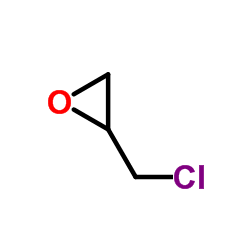 CAS#:106-89-8
CAS#:106-89-8 CAS#:616-23-9
CAS#:616-23-9 CAS#:507-09-5
CAS#:507-09-5 CAS#:107-19-7
CAS#:107-19-7 CAS#:59051-15-9
CAS#:59051-15-9 CAS#:55487-28-0
CAS#:55487-28-0 CAS#:67-56-1
CAS#:67-56-1 CAS#:124-38-9
CAS#:124-38-9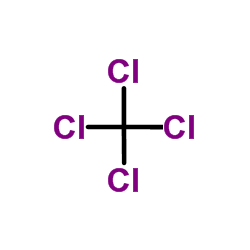 CAS#:56-23-5
CAS#:56-23-5 CAS#:15205-69-3
CAS#:15205-69-3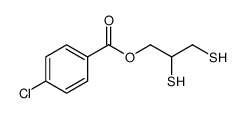 CAS#:103038-53-5
CAS#:103038-53-5 CAS#:538-74-9
CAS#:538-74-9 CAS#:55487-29-1
CAS#:55487-29-1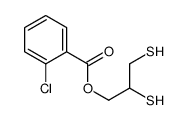 CAS#:103040-47-7
CAS#:103040-47-7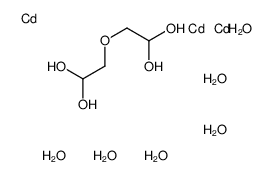 CAS#:7224-17-1
CAS#:7224-17-1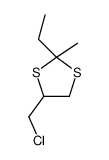 CAS#:88942-49-8
CAS#:88942-49-8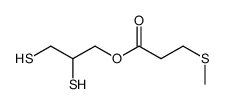 CAS#:99848-17-6
CAS#:99848-17-6 CAS#:5694-47-3
CAS#:5694-47-3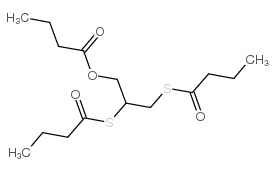 CAS#:58428-97-0
CAS#:58428-97-0
